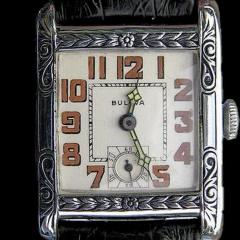3D printed RS mainspring winder project for hobbyists
-
Recently Browsing
- No registered users viewing this page.
-
Topics
-
Posts
-
I would go for the dearer spring. You won't need to remove the spring from the carrier ring and then use a mainspring winder to get it into the barrel, for a start. Also that spring is closer to the needed dimensions, especially the length. The length plays a part in the mainsprings strength. If you double the length you will half the force (strength) of the spring and vice-versa. A spring with 20 mm less length would be about 7% shorter, so technically would be 7% more strength, but I find halving this number is closer to real-world findings, so the spring would be about 3 to 4% more strength/force. On a mainspring that ideally kicks out 300 degrees of amplitude, a 3% increase in amplitude would be 309 degrees. Increasing or decreasing the length of the mainspring will affect the power reserve to a greater or lesser degree. It depends how much shorter or longer it is.
-
I recently bought this but not on ebay. I figured if I want something Japanese I better check Japanese auction sites since these don't seem to pop up on ebay. I paid 83 € plus shipping & taxes. I think it was pretty reasonable for a complete set in good condition.
-
Did you take the friction pinion off the large driving wheel and grease it? Although, now that I think about it, that shouldn't have any effect on the free running of the train if the friction pinion isn't interacting withe minute wheel/setting wheel...
-
I did in fact use Rodico to get the spring into general position and "hold" it there while I used a fine oiler to make subtle positional adjustments.
-
By Neverenoughwatches · Posted
The two measurements of particular importance wound be the height and the strength, the length would obviously correspond with the increase/reduction of half mm of barrel diameter. There is a big difference in price considering that the more expensive one is the shortest. The longer one might be ok ? But then it is taking up more room in the barrel, might it effect the unwinding ? I wouldn't have thought so for just that small amount. Ideally a pro might reduce the longer one to suit. But there is some information that might help, do you have the one that was fitted to measure up, though not necessarily the right one.
-









Recommended Posts
Join the conversation
You can post now and register later. If you have an account, sign in now to post with your account.
Note: Your post will require moderator approval before it will be visible.